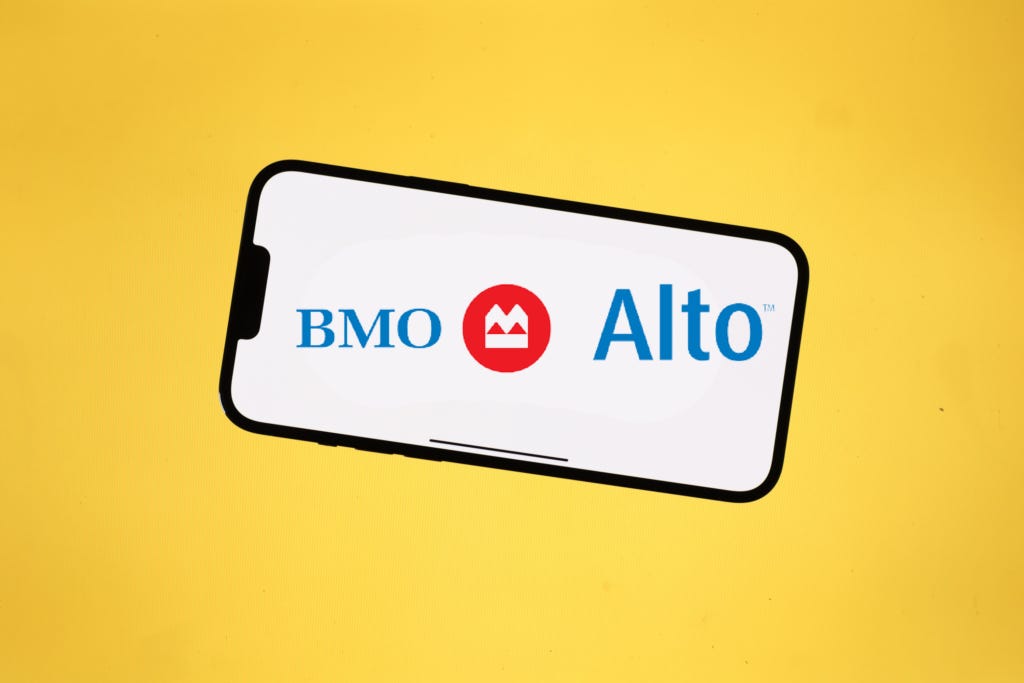| Provider | Best For | Key Benefit |
|---|---|---|
| Prime Alliance Bank | Best Overall | Competitive interest rate for any balance |
| Patelco Credit Union | Best for Small Balances | Higher APY for smaller balances |
| Axos Bank | Best for Debit Users | Full debit card access with no monthly fees |
| Ally Bank | Best for Ultimate Flexibility | Access your funds online, through ATM, debit, or Zelle |
| Synchrony Bank | Best IRA Options | Roll over an existing IRA to an IRA money market account |
Alternative Passive Income Ideas
You’ll find a laundry list of alternatives to stock, bond, and cash passive income ideas. Some of these choices are more passive than others. Real estate investing is frequently touted as a response to the question, “What is the best way to earn passive income?” But real estate investing takes many forms, and requires varying amounts of effort.
Owning and managing real property requires a chunk of capital and is a passive endeavor until a pipe breaks or the renter doesn’t pay their rent. Then it is a lot of work. Real estate crowdfunding apps or investing in real estate investment trusts (REITs) are more passive. Once you purchase the securities, you wait for the cash flow.
Another popular way to earn passive income online is by creating an affiliate website, but this involves more work than meets the eye. An Airbnb rental is only semi-passive if you hire a team to manage the property. Cash-back credit cards and shopping sites might be considered a passive income idea, yet you’re spending in order to receive the cash. That’s not a net-positive endeavor.
Other alternatives to passive income involve digital property sales, like e-books, courses, apps, and other online goods. For all of these passive income ideas, there is a hefty startup time commitment and some upfront cash as well. You’re also less certain of receiving a return on your investment if the sales miss expectations. Evaluate these alternatives to passive income to learn whether there’s a strategy for you.
REIT Investing
A real estate investment trust or REIT is an investment vehicle that owns a pool of commercial real estate. There are REITs that provide broad diversification across the real estate landscape. Or you can buy niche REITs that own senior housing, student housing, warehouses, commercial property, mortgages, shopping malls, data centers or many other varieties of property. The benefit of REITs for cash flow is that they are required by law to pay out 90% of their taxable income to shareholders.
Peer-to-Peer Lending
Debt investing is popular, with many platforms that enable everyday investors to be the bank and lend money to others. Peer-to-peer lending offers various types of loans for various reasons. Platforms match borrowers with lenders for various cash needs.
These peer-to-peer lending apps offer higher interest payments than other traditional stock, bond, or cash vehicles. But they are riskier as potential loan payment defaults can eat into your returns. To minimize that risk, you can choose to invest in higher-quality loans and diversify by owning many loans.
Real Estate Crowdfunding
Real estate crowdfunding allows investors to finance real estate projects through online platforms with the goal of profiting either from capital appreciation or passive income. There are a range of real estate crowdfunding websites offering small to large investors an entry into commercial, industrial, single-family, and apartment building investing.
Fundrise is our 2024 best real estate crowdfunding website. It provides investment access to real estate and startup venture capital funding with only a $10 minimum.
Real estate crowdfunding can deliver a higher interest rate than REITs, but it has less liquidity, less government oversight, and a greater risk of default.
Real Estate Debt or Note Investing
Real estate debt or note investing puts you in a banker’s seat. You lend money to those seeking to buy new real estate, remodel existing property, fix and flip, and a variety of other types of real estate investors.
Apps like Groundfloor provide investors the opportunity to lend to real estate buyers. The allure of lending to real estate borrowers is that your investment is secured by real property. Some of the larger real estate crowdfunding apps also deliver real estate note investing.
A drawback to real estate note investing also makes it one of the best investments for passive income. Unlike publicly traded securities, you can’t immediately redeem your shares, but may need to wait several months or more for a return of your principal investment. The lack of liquidity can also lead to higher investment returns.
Affiliate Marketing
Affiliate marketers sell products and services on their websites or social media accounts and receive a commission from the brand for the sale. Affiliate marketers frequently write reviews to draw visitors to their websites. The setup for affiliate marketing is not passive and involves creating a website or social media platform, developing contracts with companies who pay affiliates, and creating content to draw visitors to the website.
The passive aspect of affiliate marketing is that once the content is written and a website develops a stream of visitors, your work is diminished. That’s only partially true, as you’ll need to write new content and update old content in order to maintain and increase website traffic. Additionally, it can take months or more to begin to generate cash flow. We place affiliate marketing on the higher-effort step of the passive income ideas ladder.
Digital Product Sales
Creating digital products or content, such as online courses, is among the best ways to earn passive income online. Similar to affiliate marketing, you’ll sell your digital products online through a variety of outlets, such as an Etsy store, social media platform, YouTube, or a website.
Align your digital products with your area of expertise. Sample types of digital products include printouts, e-courses, e-books, webinars, and more. This is not the best passive income idea for beginners with limited free time. Making passive income with digital product sales initially requires market analysis, product creation, and marketing before realizing decent passive income flow.
Advertise on Your Car
Drivers with cars can get paid to wrap their cars in advertisement banners. We found firms that paid from $100 to $500 per month just for driving with an advertisement on their car. For anyone wondering, “What is the simplest way to make passive income?” Car wrapping is not without its limitations.
Car wrapping scams exist and, unfortunately, are abundant in the industry. Don’t pay money upfront for access to advertise with car wrapping. You’ll also need to accept the advertiser’s stipulations of mileage, and other factors. Finally, making passive income by advertising on your car means that you need to drive around with an ad on your car. To put this in perspective, the ad can be simply placed on the door or hood of your car, or it can be wrapped around the entire vehicle. Make sure you understand what’s needed before signing a binding contract.
Create an Online Store with Drop Shipping
Creating an online store with drop shipping can answer the question, “How can I passively make $1,000 a month?” After setting up your product inventory, payment system, and marketing strategy, drop shipping is among the simplest ways to make money online. Select products from manufacturers or wholesalers and sell them as your own inventory. The supplier handles the inventory and shipping, so you can grow your brand and market the shop.
Like most passive online income strategies, after setting up the business, you’ll need to devote a lot of time to marketing. You can market your store through a website and/or social media. Once you’re up and running, with brand recognition and customers, maintaining an online store with drop shipping is a good form of passive income.
Best Alternative Investing Platforms
Factors to Consider When Choosing Passive Income Streams
Capital
All passive income ideas require startup capital. To develop a meaningful passive income stream from financial assets like cash equivalents, stocks, and bonds, you’ll need a decent account balance. With $100,000, an investment paying a 5% dividend or interest payment provides $5,000 per year cash flow.
Although affiliate marketing requires a small cash outlay to potentially obtain cash flow, you’ll pay more with your human capital or time.
Risk
All investments carry a degree of risk. Certificates of deposit and high-yield cash investments don’t risk the principal value of your investment, but they could lose purchasing power over time due to inflation. Investing in higher-risk dividend-paying financial assets involves the potential to lose principal and decrease cash flow should dividends be cut. Crowdfunding passive income investments are less regulated and can tie up your money for longer periods with added risks of defaults and platform failures.
Taxes
With the exception of tax-exempt municipal bonds from your state of residence, all income is taxed by the government. After-tax income is what really matters, so understand how your investment is taxed, and your specific marginal tax bracket. Dividends and interest payments may have their own tax rates.
Key Differences Between Stocks and Alternative Investments
| Stocks and ETFs | Alternatives | |
|---|---|---|
| Liquidity | Extremely liquid; can trade throughout the day | Many have lock-up periods which tie up your money for periods from several months to several years |
| Fees | Fee-free trading with most brokerages; most ETFs and mutual funds charge less than a 1.0% expense ratio | Fee structures range from simple to quite complex; a few platforms provide low-fee alternative investments, while others have complex fee structures, including performance-based add-on fees |
| Minimum Investment | Fractional stock and ETF shares can be bought on multiple investment platforms for as little as $10 | Platforms are available for both accredited and non-accredited investors; minimum investment amounts range from a low of $10 to four to five figures. |
| Correlation | Stocks exhibit distinct correlations among specific sectors and geographic regions; lower correlations between assets lead to more price stability within your investments | Alternatives will also have correlations within themselves and won’t always move in lockstep—the correlation between stocks and alternatives will depend upon the time period and specific alternative investment vehicle |
Frequently Asked Questions (FAQs)
What Is Passive Income?
Passive income is money that you earn without much effort. In contrast with earned income, from a job, passive income flows after an initial startup effort and cost to create long-term cash flow. Passive income ideas span low-effort activities such as buying a high dividend bond fund to creating online businesses that require an initial startup effort which becomes less labor-intensive over time.
What’s the Difference Between Active Income and Passive Income?
There is a fine line between active and passive income. Clearly, going to work every day in exchange for a regular paycheck is active income. Task work such as food delivery, rideshare driving, freelance jobs, consulting, and contract work are also ways to create active income. With active income, you get paid for working. Passive income ideas span a range of jobs that require less effort than active income.
Receiving income in exchange for zero effort is unlikely unless you count receiving an inheritance or winning the lottery. Writing a book and then receiving royalties is a great example of passive income, yet with the passage of time, book royalties will decline. In contrast, if you buy a dividend-paying stock fund, once you select the investment, you will receive ongoing dividend payments without much additional effort.
Some passive income ideas are liquid, like buying dividend-paying investments, while others are less liquid, like long-term real estate syndications. Some passive income jobs require minor ongoing work in exchange for cash flow, while others are less passive and involve greater ongoing effort. Passive income strategies range from those with a small startup effort, like investing in dividend-paying stock or money market mutual funds, to more labor-intensive ones, such as managing rental properties or creating an affiliate marketing review website.
How Can You Make Passive Income With Little to No Money?
By creating digital products like courses, apps, e-books, and more and selling them, you can create passive income with minimal cash. Books can be sold on digital marketplaces like Amazon, while you can sell other products through your social media accounts or an online store. While you don’t need a lot of cash to create digital products, you need time and effort to market and sell them.
If you have a job with a 401(k) or other retirement account, you can contribute part of your paycheck to that account and invest in financial assets. At retirement, you’ll have enough money to create a passive income stream.
Can You Live Off of Passive Income?
Yes, you can live off of passive income. It’s easiest to live off of passive income if you live in an area with a low cost of living. To live off of financial investment and cash-equivalent income, you’ll need a larger amount of money. To earn $30,000 per year, you’ll need $600,000 invested at 5% per year.
To live off of digital product or service sales, you’ll need to earn several thousand dollars per month. The same goes for affiliate marketing.
Older individuals who have built up a large amount of investable assets are most likely to be able to live off of passive income. The exceptions are those who’ve made a lot of money early in life, live simply, and invest for income and capital growth.
How Do You Pick the Right Passive Income Idea?
To pick the right passive income idea, assess your available time, risk tolerance level, and available capital. Also, explore your skill sets to determine which passive income ideas are a good fit for you. The easiest way to start investing for future passive income is to start small and automate your investing.
Who Should Consider Passive Income Streams?
Everyone should consider investing for the future. When you are older, it’s easier to create a passive income stream with investing. Younger individuals with ambition and the ability to motivate themselves are wise to consider creating passive income streams through online stores and creating digital products. Employment is uncertain, and creating multiple streams of income is a sound financial plan.
Is Passive Income Taxable?
Yes, all income is taxable. Earned income is taxed at the federal, state, and local level. You’ll also pay self-employment tax with earned self-employment income. Investment income has its own tax considerations. While real estate can be taxed in various ways.
To understand how passive income is taxed, it’s wise to visit the IRS website for more details. Online tax software programs such as Turbo Tax can help you estimate the tax you’ll pay on passive income.
Does Passive Income Affect Social Security Benefits?
While passive income won’t impact the amount of your Social Security benefit, it can affect the amount of tax you’re required to pay. Up to 85% of your Social Security benefits can be taxed. Like all IRS regulations, there is a list of criteria to determine the impact of your passive income on the taxation of your Social Security benefits.
Visit the SSA.gov website to understand how your passive income could impact the taxation of your Social Security benefits.
How to Make Passive Income as a Teenager
Teenagers have many money-making ideas available to them. Unless you have access to a large sum of money, earning passive income through investing in dividend-paying assets is unlikely. Creating an online business as a teenager is a potential path to future passive income. Starting an online store, selling digital products, creating an e-course, or writing product reviews are all paths to ultimately making passive income as a teenager.
Teenagers can promote their businesses online through a website and/or social media accounts. These beginner passive income ideas require substantial startup effort and a modicum of long-term maintenance.




